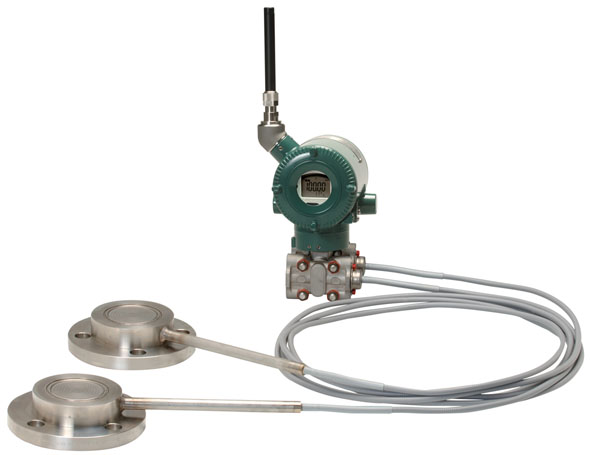무선 다이어프램 씰은 프로세스 유체가 차압 및 압력 전송기의 압력 감지 어셈블리에 직접 들어가는 것을 방지하기 위해 사용되며, 충진 유체로 채워진 캐필러리를 사용하여 전송기에 연결됩니다.
EJX118B 무선 다이어프램 차압 및 EJX438B 무선 다이어프램 게이지 압력 전송기는 액체 레벨, 밀도 및 압력은 물론 액체, 가스 또는 증기 유량을 측정하는 데 사용할 수 있습니다.
EJX118B 및 EJX438B는 프로세스 변수뿐만 아니라 무선 신호를 사용하여 설정 Parameter를 전송합니다. 전송기는 내부 배터리로 작동하며 하드 와이어 링이 필요 없기 때문에 설치 비용이 감소 될 수 있습니다. 통신 프로토콜은 ISA100.11a 프로토콜 사양을 준수합니다.
Details
- 긴 수명의 배터리 설계
두 개의 대용량 리튬 - 티 오닐 클로라이드 배터리를 사용하여 초 저 전류 소비 설계는 수 년간 무선 작동을 할 수 있습니다. - 보안이 검증 된 무선 네트워크 연결
무선 네트워크 구성 및 parameter 설정을 위한 장치 간 적외선 통신. - 빠른 업데이트 시간
무선으로 통신하기 위해 측정 된 프로세스 값에 대해 0.5 초에서 60 분까지 선택할 수 있습니다.
자료실
- Oil level measurement of diesel tanks that feed fuel to their diesel generator's which are at three locations and 400 meters apart from each other.
- Also to measure level , pressure and flow to and from their main storage yard.
ISA100 Wireless Temperature and Pressure Transmitters
- Gateway x1, Temperature Transmitter (YTA) x1, Pressure Transmitter (EJX) x1
High quality wireless communication confirmed
- Packet Error Rate (PER) is 0 to 2.5%/ 5 days
The use of wireless technology in industrial automation systems offers a number of potential benefits, from the obvious cost reduction brought about by the elimination of wiring to the availability of better plant information, improved productivity and better asset management. However, its practical implementation faces a number of challenges: not least the present lack of a universally agreed standard. This article looks at some of these challenges and presents the approach being taken by Yokogawa.
In recent years, more field wireless devices have been used in hazardous areas. Meanwhile, in plants that are usually recognized as hazardous areas, there are numerous metallic tanks and pipes that easily shield or reflect radio waves, as discussed later, thus resulting in a poor environment for wireless communication.
The innovation of wireless technology increases the use of wireless communication in the industry. The introduction of wireless communication to plants, however, requires strict features such as robustness, real-time responsiveness, and low power consumption. This has restricted the use of wireless communication to limited applications such as data logging and device status monitoring that does not require strict real-time responsiveness and data arrival reliability in communication.
Downloads
Brochures
Instruction Manuals
General Specifications
Certificates
Drawings
- EJX438B Diaphragm Sealed Gauge Pressure Transmitter (Diaphragm seal section, Extended type) (149 KB)
- EJX438B Diaphragm Sealed Gauge Pressure Transmitter (Diaphragm seal section, Flush type with ring) (140 KB)
- EJX438B Diaphragm Sealed Gauge Pressure Transmitter (Diaphragm seal section, Flush type, No ring) (168 KB)
- EJX438B Diaphragm Sealed Gauge Pressure Transmitter (Transmitter body section) (265 KB)
- EJX110B, EJX310B, EJX430B Long Vent Plug (/U1) (148 KB)
기술 및 솔루션, 요꼬가와에 대한 자세한 정보를 찾고 계십니까?
견적 및 기술문의










